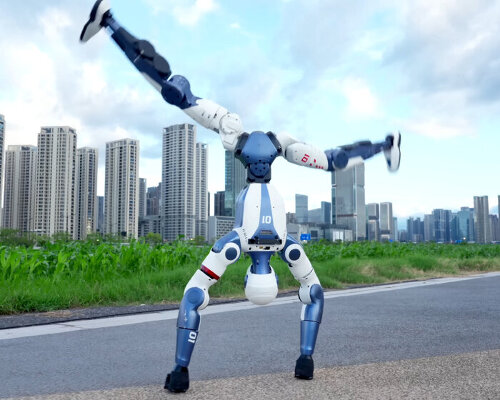Humans or humanoid robots from unitree and robotera?
Unitree unveils R1 and Robotera introduces L7, two humanoid robots that act and move more like real people. They are two of the many human-like devices these days that have more degrees of freedom in their movement as well as new technologies installed in them, letting them behave to resemble their living counterparts. Alongside these two, Fourier is also set to release its third model, the GR-3, in August 2025, and the company hints at it being more of a home companion and assistant that can freely move rather than an automated worker in a factory. Their high-performance hardware, real-time control algorithms, and biomimetic joint systems allow them to replicate how people move, even more so with increased agility. Unitree R1 has 26 degrees of freedom, enough to give it flexibility in the hips, knees, arms, and torso and make it walk, run, squat, kick, and even do cartwheels or handstands.
Usually these require coordination and balance across multiple joints, but in the bipedal humanoid robot’s case, it’s thanks to the joint systems and hardware it comes with. With Robotera L7, it’s similar, and its joints support 360-degree spins, jumps, and street dancing, which are some of the activities that normally require quick limb repositioning and core strength. The model uses quasi-direct drive joints so it can respond faster in terms of movement and reduce its own power loss. These humanoid robots from Unitree and Robotera, to name a few, have motors that can generate lots of rotational force, components that are very much needed to support and quickly move their heavy limbs or body parts, especially when they’re running, doing cartwheels, and springing back up.
all images courtesy of Unitree, unless stated otherwise
Assistive robotic devices that can balance themselves
The humanoid robots from Unitree and Robotera can exercise like people, too. For the former’s R1 model, it uses high-torque actuators to execute sudden shifts in weight and movements, so it can squat or step over obstacles while maintaining balance. L7, on the other hand, can adjust its posture in under 0.1 seconds, which the company says gives it the strength and speed needed to perform heavy-load movements, like jumping or lifting up to 20 kilos, without tipping over. Both devices also run real-time motion control systems to stabilize walking, running, and jumping. The R1 features balance control, while the L7 has protective layers and sensors in its joints to let it feel what’s happening at the moment and immediately adjust itself, if necessary, to stay balanced or keep moving.
Unitree and Robotera’s humanoid robots can also see and sense like humans. Unlike people, their visual and spatial awareness is digital and high-tech, with R1’s binocular depth camera and multiple sensors that can detect terrain and obstacles. For the L7, the camera comes with a spherical operational reach using sensors and a wide range of motion in the waist and arms. This allows it to perform delicate tasks like scanning barcodes or drawing curtains, adapting to object position in real time, making the device more ideal for workspaces like factories. They’re not human-like without having conversations with people, so for the R1 model, the team adds a 4-microphone array that lets it locate voices, follow verbal commands, and respond using built-in speakers.
Unitree’s R1 can run and jump like a real human
Modular design for the robotic body parts
The hands and arms of the humanoid robots from Unitree and Robotera are different. The L7 has a motor in each of its fingers with no gears in between, and because of this, it’s easier for it to pick up small tools or parts and use them precisely, just like a human hand. Its arms can sense and react 10 times per second, the company says, which makes it suitable for taking on technical tasks. They can also move in seven different directions, so the robot can reach, twist, lift, or adjust its hand position without moving the whole body. With R1, however, these parts are modular, meaning that it’s up to the owner to attach the extra parts like the arms and hands.
These humanoid robots are customizable and programmable too. With R1, the user can personalize its walking styles, tasks, or AI behavior with either a software development kit or remote programming. L7 has a removable upper body, so in case the owner wants to use it for industrial tasks, they can choose to just use its upper body for automated tasks. Companies have turned their focus into making humanoid robots, like the ones unveiled by Unitree and Robotera, to act more like humans. They have different purposes, including helping in production, assisting people at home, and, possibly, entertaining humans. Research and improvements by the companies are still ongoing, but in the meantime, their current hardware, joint systems, and use of AI make them behave like real people.
Unitree R1 has 26 degrees of freedom, enough to give it flexibility in the hips, knees, arms, and torso
R1 robot doing cartwheels and exercises
Robotera L7 has motors in each finger, allowing it to move them like real human hands
Robotera L7 is ideal as a manufacturing handy helper
users can use the full body or the robot or only its upper part
the bipedal robot at work
Fourier is set to release its third model, the GR-3, in August 2025
the soft-looking GR-3 robot from Fourier hints at being more of a companion than a general-purpose assistant
the GR-3 also features animated eyes to make it more human-like
project info:
models: R1, L7, GR-3
companies: Unitree, Robotera, Fourier | @unitreerobotics
The post from unitree’s R1 to robotera’s L7, humanoid robots act and move more like real people now appeared first on designboom | architecture & design magazine.

